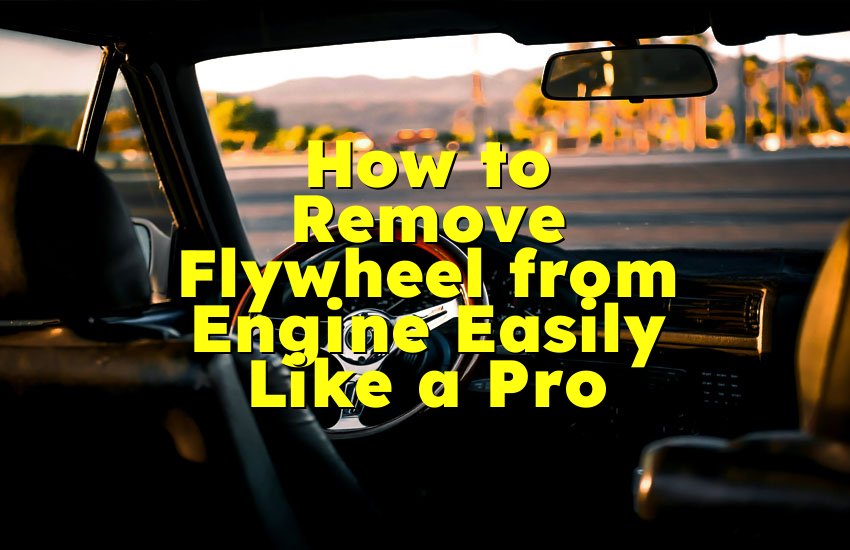As an Amazon Associate, I earn from qualifying purchases at no extra cost to you.
How to Flush Coolant System: Expert Guide and Tips
You might not think much about your car's cooling system until one day it starts overheating or you smell something strange. You want your engine to stay cool and run smoothly, right? Flushing your coolant system is a very important job that helps get rid of old, dirty coolant and replaces it with fresh liquid. Doing this keeps your car's engine safe from damage and helps it work better for a long time. In this article, I will take you through easy and clear ways on how to flush your coolant system properly so you can do it yourself without stress.
Prepare Your Car and Tools for Flushing
Before you start flushing the coolant system, you need to get everything ready. This makes the job easier and safer. First, make sure the engine is cool. Never open the radiator cap or drain valve when the engine is hot because hot coolant can cause burns. Park your car on a flat surface and turn off the engine completely. You want to be safe and have enough room to work.
Next, gather all the tools and materials you will need. This usually includes a wrench or screwdriver, a drain pan to catch the old coolant, a funnel, fresh coolant (check your car manual for the right type), distilled water, and some gloves to protect your hands. It's also good to have some rags or towels handy in case of spills.
Check the owner’s manual for your car's coolant system layout and drain points. This will help you find the radiator drain plug and the engine block drain if it has one. Knowing this makes the process smoother. If you are flushing because of a problem, like overheating or bad smell, make sure to inspect hoses and the radiator for leaks or cracks. If you find any damage, fix it before flushing.
Also, remember to protect the environment by preparing to dispose of the old coolant safely. Coolant is toxic, so do not pour it down the drain or on the ground. Find a local recycling center that accepts used coolant.
- Make sure the engine is completely cool before starting.
- Park on a flat surface and turn off the engine.
- Gather tools: wrench, drain pan, funnel, gloves, fresh coolant, distilled water.
- Check the car manual for coolant type and drain locations.
- Inspect hoses and radiator for damage before flushing.
- Prepare for safe disposal of old coolant.
Drain the Old Coolant from Radiator and Engine Block
Now that you are ready, it's time to remove the old coolant from your car's system. This is an important part because flushing means getting rid of the old liquid that may have dirt, rust, or broken-down chemicals inside. These can cause your engine to overheat or corrode if left inside.
Start by opening the radiator cap slowly to release any pressure. If the engine is cold, this should be safe and easy. Place your drain pan right under the radiator drain plug. This plug is usually found at the bottom of the radiator. Use your wrench or screwdriver to open the drain plug. Let the coolant flow out completely. It may take a few minutes for all the liquid to drain.
If your car has a drain plug on the engine block, open it too. This allows coolant from deeper inside the engine to come out, making the flush more effective. Be patient because this step helps clean out the system well.
While draining, check the color and smell of the coolant. Healthy coolant usually looks bright green, orange, or pink depending on the type. If the liquid looks dark, rusty, or smells bad, it means flushing is very needed.
Once drained, close the drain plugs tightly to avoid leaks later. Don't forget to wipe any spills and keep your drain pan safe for proper disposal.
- Open the radiator cap to release pressure.
- Place a drain pan under the radiator drain plug.
- Open the radiator drain plug and let old coolant flow out.
- Open engine block drain plug if available and drain coolant.
- Check old coolant color and smell for signs of dirt or rust.
- Close all drain plugs tightly after draining.
Flush the System with Water or Cleaning Solution
After the old coolant is fully drained, the next part is flushing the system with clean water or a cleaning solution. This step helps remove any leftover dirt, rust, or deposits that were not carried away by the old coolant. Flushing keeps your cooling system clean and working well.
Use distilled water to avoid adding minerals that can cause buildup inside your engine. Pour the water or the cleaning solution through the radiator neck or reservoir tank using a funnel. Fill it up almost to the top.
Start the engine and let it run with the heater on high. The heater uses the coolant to warm the cabin, so this helps the water or cleaning solution move through the whole system, including the heater core. Run the engine for about 10 to 15 minutes. Keep an eye on the temperature gauge to make sure the engine does not overheat.
After the engine has cooled down, drain the water or solution just like you did with the old coolant. You might see dirty water coming out, which means the flush is working. You can repeat this flushing process once or twice until the water runs clear.
Some people prefer to use a special radiator flush product, which is made to clean the system better. If you choose this, follow the instructions on the product label carefully.
- Use distilled water or radiator flush solution to fill the system.
- Run the engine with the heater on high for 10-15 minutes.
- Monitor the temperature to avoid overheating.
- Drain the flush water or solution completely.
- Repeat flushing until the water runs clear if needed.
- Use radiator flush product if desired, following instructions.
Refill the Cooling System with Fresh Coolant
Once the system is clean and flushed, you can refill it with fresh coolant. This is the liquid that keeps your engine cool and prevents freezing in cold weather. Using the right type and mixture is very important, so check your car manual for the exact coolant your vehicle needs.
Mix the coolant with distilled water if it's concentrated. Usually, a 50/50 mix is best, but again, follow your car's guidelines. Pour the coolant mix slowly into the radiator or reservoir tank using a funnel. Fill it until the level reaches the full mark.
After filling, leave the radiator cap off and start the engine. Let it run for a few minutes with the heater on. This lets air bubbles escape from the system. You might see bubbles or hear a gurgling sound—that's normal. Keep adding coolant if the level drops during this time.
Once you see no more bubbles and the coolant level is stable, close the radiator cap tightly. Check the coolant reservoir and top it off if needed. Also, make sure there are no leaks around hoses or the radiator.
Refilling with fresh coolant protects your engine from overheating, rust, and freezing. It also helps the heater work properly when it's cold outside.
- Use the correct coolant type and mix from the car manual.
- Mix coolant with distilled water if needed (usually 50/50).
- Slowly pour coolant into radiator or reservoir until full.
- Run engine with heater on to release air bubbles.
- Add coolant if level drops, then close radiator cap tightly.
- Check for leaks and top off reservoir if necessary.
Check for Air Pockets and Bleed the System
After refilling, it's very important to check for air pockets trapped in the cooling system. Air pockets can cause overheating because they stop coolant from flowing properly. This is why bleeding the system is necessary.
To do this, keep the radiator cap off and run the engine with the heater on high. Watch the coolant level in the radiator or reservoir. You may see the level drop or bubbles rising as trapped air escapes. Add coolant as needed to keep the level full.
Some cars have special bleed valves near the thermostat or radiator. Open these valves slowly to let out air until coolant flows smoothly without bubbles. If your car does not have bleed valves, just keep running the engine and topping off the coolant.
Once you no longer see bubbles and the coolant level is steady, close the radiator cap tightly. Then, check the coolant level again after a short drive, because more air might come out while driving.
Bleeding your cooling system ensures coolant moves through every part of the engine, preventing hot spots and overheating. It also helps your heater work better in cold weather.
- Run engine with heater on and radiator cap off to release air.
- Add coolant as level drops to keep system full.
- Open bleed valves if your car has them to let air escape.
- Continue until no bubbles appear and coolant level is steady.
- Close radiator cap tightly after bleeding.
- Recheck coolant level after driving and top off if needed.
Dispose of Old Coolant and Clean Up Tools
After finishing the flushing and refilling, it is very important to clean up and dispose of the old coolant properly. Coolant contains chemicals that are toxic to people, pets, and the environment, so it must never be poured down drains or on the ground.
Collect the used coolant in a sealed container or the drain pan you used. Take it to a recycling center or an auto shop that accepts used coolant. Many places will take it for free or a small fee.
Clean your tools, drain pan, and any spills with water and soap. Wear gloves while cleaning to avoid skin contact with coolant. Wash your hands well afterward.
Also, check the work area for any leftover coolant or debris. Keeping your workspace clean helps prevent accidents or harm to pets and children.
Proper cleanup and disposal protect the environment and keep your home safe after flushing the coolant system.
- Collect old coolant in a sealed container.
- Take used coolant to a recycling center or auto shop.
- Clean tools, pans, and spills with soap and water.
- Wear gloves while cleaning and wash hands well afterward.
- Check work area for spills or debris.
- Dispose of waste responsibly to protect the environment.
Final Thoughts
Flushing your car's coolant system may seem like a big job, but with the right tools and clear steps, you can do it safely and well. It helps keep your engine cool, stops overheating, and makes your car last longer. By preparing carefully, draining old coolant, flushing the system, refilling with fresh coolant, bleeding air pockets, and cleaning up properly, you give your car the care it deserves. Taking time to do this now can save you from expensive repairs later. Remember, your car's cooling system is key to smooth, trouble-free driving.
Frequently Asked Questions (FAQs)
Is it safe to flush the coolant system by myself?
Yes, it is safe to flush the coolant system by yourself if you take the right safety steps. Make sure the engine is cool before opening the radiator or drain plugs to avoid burns. Wear gloves and eye protection to prevent contact with coolant, which is toxic. Follow your car's manual and the proper tools. If you feel unsure, ask a friend or mechanic to help. Doing it carefully can save you money and teach you more about your car.
Can I use tap water instead of distilled water for flushing?
It is better to use distilled water instead of tap water when flushing the coolant system. Tap water contains minerals and chemicals that can cause corrosion and buildup inside the engine over time. Distilled water is pure and will not harm the cooling system. Using distilled water helps keep the system clean and working well. If you must use tap water, try to flush the system more often to reduce damage.
Do I have to flush the coolant system regularly?
Yes, flushing the coolant system regularly is important to keep your car running smoothly. Over time, coolant breaks down and collects dirt and rust. This can clog the radiator and cause the engine to overheat. Most experts recommend flushing every 2 to 5 years, depending on your car and coolant type. Check your owner’s manual for specific intervals. Regular flushing keeps your engine safe and prevents costly repairs.
Is it necessary to bleed the cooling system after refilling?
Yes, bleeding the cooling system is necessary after refilling to remove air pockets. Air trapped inside the system stops coolant from flowing properly and causes overheating. Bleeding lets out the air and fills the system with coolant fully. If your car has bleed valves, use them. Otherwise, running the engine with the radiator cap off and heater on helps release air bubbles. Skipping this step can cause engine problems later.
Can I flush the coolant system with the engine running?
You should only run the engine during the flushing process after you have filled the radiator or reservoir with water or flushing solution. Running the engine helps circulate the liquid and clean out dirt inside the system. However, never open the radiator cap or drain plugs when the engine is hot, as this can be dangerous. Always start with a cool engine and follow safety steps.
Do I need to use a special radiator flush product?
Using a special radiator flush product is optional but can be helpful. These products are designed to break down rust, dirt, and deposits inside the cooling system better than water alone. If your coolant looks very dirty or you notice overheating, a radiator flush product can improve cleaning. Follow the instructions carefully when using these products. If your coolant is only a little old, distilled water flushing might be enough.
Is it important to use the exact coolant type for my car?
Yes, it is very important to use the exact coolant type recommended for your car. Different cars need different coolant formulas to protect their engines and cooling systems. Using the wrong coolant can cause corrosion, damage hoses, and reduce cooling efficiency. Always check your owner's manual or ask a mechanic to get the right type. Mixing different coolants can also cause problems.
Can I dispose of old coolant by pouring it outside?
No, you should never dispose of old coolant by pouring it outside or down drains. Coolant contains toxic chemicals that are harmful to animals, people, and the environment. Instead, collect the used coolant in a sealed container and take it to a recycling center or an auto shop that accepts it. Proper disposal helps keep our environment safe and avoids pollution.











